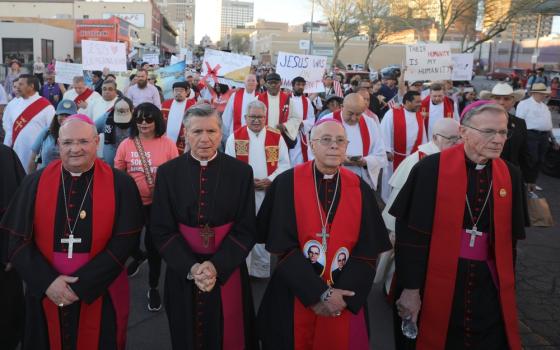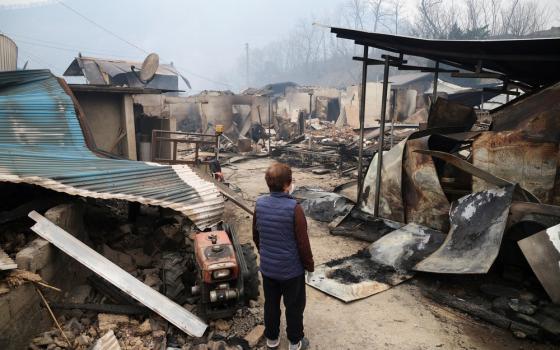The historiography of the American founding is an ever-changing landscape, as historians look at evidence that was previously ignored or minimized, and, just as importantly, as a new generation of historians brings the questions of their own times to the data of previous times. Few periods are as studied as that of the revolutionary and founding generations, yet historians continue to see things that were opaque before, filling out our understanding of our shared past. It is important work not only for historians but for all of us. “Getting its own history wrong” has been called an essential part of a nation’s identity, and so it is, but the more we get right, the less likely some ideologue will be able to distort that history for improper ends.
For many generations, and still in some high school textbooks, the general narrative of religion in America was profoundly wrong. It posited a Puritan seventeenth century, followed by an enlightened eighteenth century, which gave way to a revivalist nineteenth century. The scholarship of many, most especially Patricia Bonomi, has debunked that always incredible simplification, for example noting that church attendance rates went up throughout most of the eighteenth century.
Maura Jane Farrelly has written a new book, “Papist Patriots: The Making of an American Catholic Identity,” that is well worth the read and serves an an important contribution to this on-going refinement of history. She offers a detailed and thorough-going look at the historical and cultural antecedents of Maryland’s revolutionary-era Catholics, in the seventeenth and eighteenth centuries, and on both sides of the Atlantic. Her thesis is this: The Catholic founders of Maryland were a tolerant bunch and, after they lost control of their colony, in the face of nearly 100 years of anti-Catholic hostility, they successfully appealed to the relatively tolerant early years of the colony to fight efforts to apply more draconian British anti-Catholic penal laws, and that this struggle gave those Catholics a distinct identity rooted in American experience. Just so, they were easy pickings for the Revolutionary movement in the 1770s.
This thesis remains debatable at the end of the book, as it does at the beginning, but along the way, we learn a great deal about the often difficult lives of English and American Catholics, presented in prose that is readable and with ample footnotes for those who wish to investigate further.
One of the more interesting stories that winds its way through the narrative is the relationship between Catholic clergy and laity. In post-Reformation England, a type of “seigneurial Catholicism” emerged in which a priest was essentially a part of the staff at a large manor house. Oftentimes, the priest was treated like other staff, expected to do the bidding of the master, not as the representative of a distinct, spiritual authority. The harsh anti-Catholic laws – Catholics were presumed to harbor treasonous intentions - made the clergy very dependent on the protection of local Catholic gentry. And so when Bishop Richard Smith endeavored to set up an ecclesiastical tribunal for the adjudication of wills, a group calling itself “The Lay Catholics of England” wrote in opposition, warning that such an effort would be considered treasonous by the civil authorities and expose the Catholic population to renewed persecution.
There were other incidents, on both sides of the Atlantic, of zealous Catholics, both clerical and lay, acting in such a way as to court disaster, antagonizing the ambient, Protestant authorities. We also find examples of priests trying to ease the consciences of their flocks in ways that would commend themselves to today’s pastors. For example, when farmers sought a dispensation from the obligation to attend Sunday Mass during the growing season, the local clergy urged their ecclesiastical superiors to grant the request, noting how seriously the Catholic laity were in their devotion to the Church by even making such a request seeing as it would cost them nothing, except perhaps their souls, to just skip out on their obligation.
Farrelly’s account also shows the way that other motives and machinations created instances of tolerance against the general back-drop of anti-Catholic legal and cultural prejudice. Indeed, George Calvert, the first Lord Baltimore, was not an old Catholic, but a convert. “During his two decades as king,” Farrelly writes, “James I actually elevated ten Catholic men to the peerage, more than doubling the number of Catholic nobles who had lived in England under his predecessor, Elizabeth I.” Farrelly notes that some attributed this relative tolerance of Catholics to the fact that James was married to one. Queen Anne had converted to Catholicism from Lutheranism shortly after her arrival in England. That, too, is interesting.
The “Durham Clause” in Maryland’s charter receives a great deal of valued attention in the book. The clause, a vestige of medieval law, had originally given the Bishop of Durham extraordinary vice-regal powers over his jurisdiction, given its distance from London and the near-constant threat of invasions from the north. The proprietors of Maryland were given a similar clause in their charter, evidence Farrelly believes, that the colony was indeed intended as a haven for Catholics and that the authorities in London understood that the proprietor would need more authority than most colonial leaders to pull off such an experiment, not least because Catholics were always destined to be a minority of Maryland’s population.
Farrelly provides a detailed analysis of the adoption, and later repudiation, of Maryland’s Act of Tolerance which was the first legislative enactment of such tolerance in the English speaking world, adopted in 1649 long before Mr. Locke took up his pen in defense of tolerance, a tolerance Locke declined to extend to Catholics of course. Tomorrow, we will finish the review by looking at how that tolerance, once lost but not forgotten, effected the ways Catholics in Maryland understood themselves and their rights.




